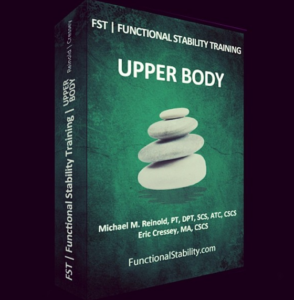Assessments You Might Be Overlooking: Installment 3
About the Author: Eric Cressey
It’s time for another installment of my series on things you might overlook when assessing a new client or athlete. Here are three more things to which you should pay attention:
1. Shoulder Flexion Range of Motion – This is a valuable test to use in conjunction with a back-to-wall shoulder flexion test. If you can’t effectively perform a back to wall shoulder flexion as in the video featured here, then we need to ask “why not?”
It might happen because you lack good stiffness in various places – anterior core, lower trapezius, upper trapezius, and serratus anterior, to name a few. Or, it might be because you’re unable to overpower bad stiffness or shortness. Maybe you lack thoracic extension, are too rhomboid dominant, or simply can’t get full shoulder flexion range of motion. To check for this last one, you’ll want to put the individual in supine with the back flat and knees and hips flexed. They should be able to get the arms all the way down to the table – so this would be no good.
Shoulder flexion can be limited by a lot of things: short/stiff lats, teres major, long head of the triceps, and inferior capsule. Regardless of what limits it, though, you can’t just take someone with this limited a ROM and plug them into overhead pressing. You’re just waiting to chew up a rotator cuff, biceps tendon, labrum, or all of the above.
As a little bonus, this is my favorite drill for improving shoulder flexion ROM:
2. Scapular Upward (or Downward) Rotation – It goes without saying that scapular control – or the ability to position the shoulder blades appropriately – is absolutely essential to safe and effective upper extremity movement. In order for that to occur, though, the shoulder blades have to start in the right position. With respect to scapular rotation, “neutral” posture has the shoulder blades sitting at 5 degrees of upward rotation at rest. In the picture below, the black line represents where he should be in terms of upward rotation, but instead, you’ll see that he sits in about 20-25 degrees of downward rotation (for the record, there are a number of other things wrong with this posture, so this is only a start!).
The problem with starting in this much downward rotation (or any downward rotation, at all) is that it’s like beginning a race from 20 yards behind the starting line. When the arm starts to move up, the shoulder blade needs to rotate up to maintain the ball and socket congruency. If it starts too low, it can’t possibly be expected to catch up – so the ball will ride up relative to the socket, regardless of how strong the rotator cuff is to try to prevent that superior migration. You’ll wind up seeing irritation of the rotator cuff, biceps tendon, labrum, or bursa if it’s left unchecked.
Step 1 is to simply educate people on where the scapula actually should sit, and step 2 is to work on training from that correct new starting position.
3. Constant stretching – I always take note of when I see a client who seems to be stretching “nervously” when they’re just standing or sitting around. You’ll often see people cranking on their shoulders, cracking their necks, touching their toes, or any of a number of things that make them “feel better.
The problem is that these people are often stretching out protective tension – or stiffness that’s there because they lack stability elsewhere. This is often the case with those with significant joint hypermobility. They’re already unstable, but the stretching is like picking a scab; it gives them temporary relief from the tightness, but only makes things worse in the long run. It might be hamstrings tightness in someone with crazy anterior pelvic tilt, biceps tightness in those with anterior shoulder instability, or any of a number of other presentations throughout the body. Unquestionably, though, the most common one is neck stretching in those with poor scapular control.
There is no one solution for everyone’s problem, but I would encourage you to always ask, “Why is this tight?” And, don’t even think about stretching until you know the answer.
I’ll be back soon with more commonly overlooked assessments. In the meantime, if you’re looking for an additional resource on this front, I’d encourage you to check out Assess and Correct: Breaking Barriers to Unlock Performance and Functional Stability Training of the Upper Body.





